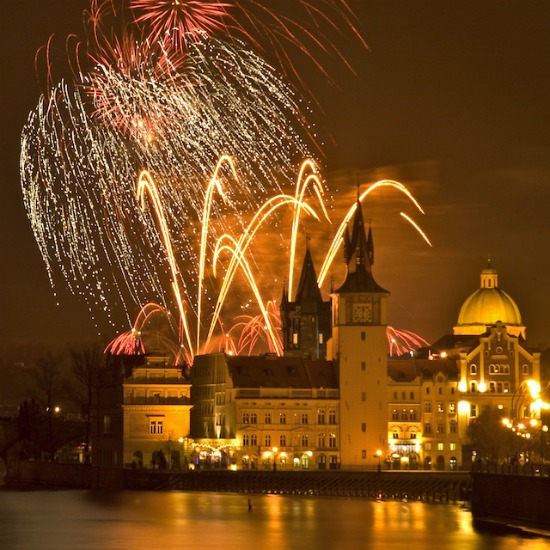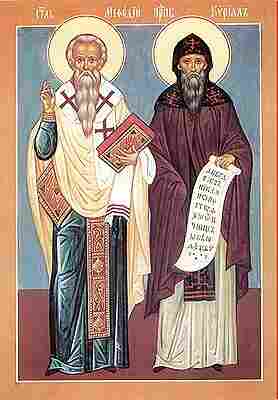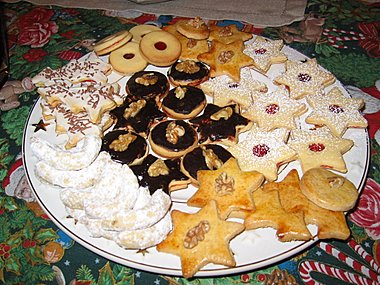New Year’s Day / Restoration Day of the
Independence Czech State (January 1):
Most Czechs like to close their year or bring in the new year –
depending on how you look at it – with the usual ways that other countries do
it. Elaborate parties held in
bars, clubs, and restaurants are very popular, and many of these places have
special New Year’s specials on prices and dishes on their menu. Some people who prefer not to spend
their evening in the hustle and bustle of the bar crowd may opt for saner
activities such as theatre performances or the opera. There is also a lot of
live music and concerts taking place but many of these sell out quickly, so
people have to buy tickets well in advance. But regardless, most adults adhere to the tradition of
toasting champagne at the stroke of midnight, followed by fireworks and other
pyrotechnic reverie. It also happens to be Restoration Day, the day that
Czechoslovakia separated into Czech Republic and Slovakia (also sometimes
referred to as the Velvet Divorce).
Easter Monday (varies): Easter is always celebrated
for two days in the Czech Republic: both Sunday and Monday. During the
Communist years of Czechoslovakia, the holiday was relegated to being a holiday
about spring. And even in the post-Communist era, and in respect to the fact
that most Czechs aren’t that religious, it took a while for the Christian-based
traditions to slowly return. One
tradition you’ll find is highly-decorated, hand-painted Easter eggs. Another tradition is to take
pussywillow and braid them together to form a whip. The boys would go caroling
on Easter Monday and symbolically whip the girls on their legs (and possibly
may also throw a little water on them as well – another tradition in certain
areas). Yeah, I’m sure the girls just really looked forward to this. It used to
be that farmer’s wives would use the whip to whip not only the livestock but
also everyone else in the house. (Something tells me, this tradition actually
lasted for far more days than just these two.)
Labor Day (May 1): The Czech Republic celebrates Labor Day on the customary day
for many of the world’s countries. Of course, most people have this day off of
work, and government offices and schools are closed for the day. Many cities will hold parades, and
politicians always feel compelled to give speeches regarding the state of labor
at that time. Just yesterday in The
Prague Post (“The Czech Republic’s English-language Newspaper”), there was
an article about how the Czech Republic is the third-worst European country
when it comes to slavery (just after Albania and Montenegro). It not only mentioned foreign workers
who have had their papers taken away and only working for food and
accommodation, but also the number of Czechs who are taken to other countries
and forced to work under similar conditions.
Liberation Day (May 8): This holiday marks the end of the European involvement in
WWII in 1945 (also known as VE Day).
Most of the traditions on this day are memorial services, headed by various
government leaders. The president heads one of the largest memorial services in
Prague.
Saints Cyril and Methodius Day (July 5): Saints Cyril
and Methodius were two monks who were often attributed as creating the Glagolitic
and Cyrillic alphabets (the same alphabet used by Russian and other languages). In many of the Slavic countries, these
two are commemorated as national saints.
The holiday was originally on March 9, but Pope Pius IX moved the date
to July 5.
Jan Hus Day (July 6): Jan Hus was a religious
reformer living before Calvin or Luther. He had a lot of problems with the
Catholic Church at the time, aligning his ideas against the Church’s regarding
ecclesiology (a theological term meaning the origin of Christianity in
relationship to Jesus, salvation, its leadership, etc.), the Eucharist (also
known as Holy Communion), and other topics. Obviously the church doesn’t like
dissidents, and after a trial, he was burned at the stake in 1415. Jan Hus
wasn’t just a theologian and martyr: he also introduced some important
additions to the written Czech language in the form of diacritic marks. The
hacek and accent marks over certain letters reformed the language into what we
are familiar with today.
St. Wenceslas Day (September 28): Wenceslas I (also
spelled Wenceslaus) was the Duke of Bohemia; and yes, it’s the same Wenceslas
as in the Christmas carol “Good King Wenceslas.” His younger brother
assassinated him in 935, stemming from an argument between the two and later
took the role as Duke himself. Many towns and cities will hold street festivals
in honor of St. Wenceslas, which include food, drink, games for kids, cultural
displays, and many restaurants will have a special St. Wenceslas Day menu. Museums and galleries may also open
their doors to allow people to come visit for free.
Independent Czechoslovak State Day (October 28): This is the day that the state of
Czechoslovakia was created in 1918.
(61 years later, I was born on this day.) The creation of the country of
Czechoslovakia was created out of the end of WWI, with the fall of the
Austro-Hungarian Empire. It would
also find solidarity at the end of WWII when they banded together to oppose the
German occupancy. However, this day isn’t really celebrated with the vigor of
other independence days. Czechs mostly spend this day relaxing in their own
ways with no parades or large festivities. A few politicians may make a speech
here and there, mostly about the importance of looking back and remembering
their history and their future together.
Struggle for Freedom and Democracy Day (November
17): There are two major events
that took place which poses as the basis for this holiday. The first is the student demonstration
against the Nazi occupation in 1939, and the second are the 1989 demonstrations
that acted as the beginning of the Velvet Revolution. Because both of these demonstrations were student-led, this
day is sometimes referred to as World Students Day, which stresses the
importance of non-violent political change.
Christmas Eve and Christmas Day (December 24-25): Gifts are often placed under the
Christmas tree that is brought in and set up during the afternoon of Christmas
Eve. They’re opened later that
evening – which really cuts down on the amount of time to be poked and prodded
and peeked at. At the end of
Christmas dinner, usually consisting of roasted carp and fish soup (which is
odd that the food of choice is seafood, given this is a landlocked country), a
bell is rung, signifying that it’s time to open presents. And of course it
wouldn’t be Christmas without its array of sweet treats. Another tradition is
that they like to make predictions for the coming year using different traditions
based in superstition, such as a girl throwing her shoes over her shoulder and
if it points towards the door, it means she’ll get married soon. Since most Czech people are
non-religious, its original Christian meanings are often generally substituted
for generosity and good will.
St. Stephen’s Day (December 26): Often referred to
as the Second Day of Christmas. It’s a Christian feast day in honor of St.
Stephen, the first Christian martyr.
In the carol “Good King Wenceslas,” the lyrics speak of how he trudged
through the rough winter weather to give alms to peasants on this day. (The
familiar melody for this carol incidentally is from a 13th-century
Finnish songbook and the lyrics are about spring. Some of these songs/poems are
also found in the poetry used in Carl Orff’s Carmina Burana, one of my all-time favorite works.)
Up next: art and literature





No comments:
Post a Comment